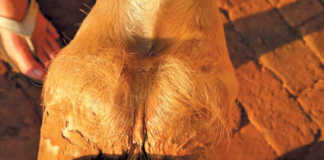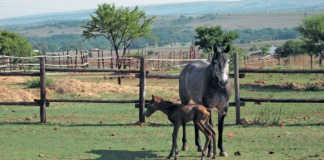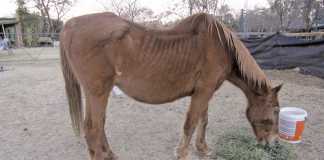Nature can be cruel, and injury and illness are a natural method of culling the old and weak, thus keeping the horse population in check. In the wild, the risk of injury and illness is actually a lot lower than in captivity. We humans expose our horses to high risks of injury and illness by using tack and rugs, transporting them, fencing them in paddocks, feeding them contrived diets and pushing them to their limits when we ride them.
Questions the vet will ask you:
What is your horse’s temperature? Take a thermometer and gently insert into the rectum, wait one minute and read the temperature. Write it down. It is a very good idea to take your horse’s temperature every morning. Doing this allows you to pick up a problem early.
Are there signs of shock? A symptom of shock is poor circulation, which means the capillaries take longer to refill after pressure. Press your thumb or finger on your horse’s gum for two seconds. When you release the pressure, the resulting pale area should turn pink again within a second.
What is the general colour of gums and eyes, and the vulva in a mare? How fast is the horse breathing? This is measured by counting how many times per minute the rib cage lifts as the lungs fill with air.
How fast is the pulse? This can be taken under the cheekbone or on the inside knee, or by placing your hand on the heart and counting how many times it beats per minute. Contact Kim Dyson on 082 888 6511.
When to call the vet
Call the vet immediately if you see:
- heavy bleeding
- intense pain (signs include groaning, violent rolling, eyes rolling, pawing at the ground and straining)
- sudden lameness or unwillingness to move forward
- any puncture wound or piece of wire or other foreign object protruding from the body
- difficulty breathing
- a yellowish fluid leaking from a joint any exposed bone.
Watch your horse carefully and ask the vet to come as soon as possible if you observe:
- a wound that is not gushing blood but might need flushing and stitches
- lameness (but the horse is able to walk)
- diarrhoea or loss of appetite
- mild colic (usually this passes before the vet arrives)
- unusual behaviour, staggering or uncomfortable walking, aggressive or unusually nervous behaviour
- lumps or an area that has a funny smell
- recurrent coughing or discharge from the nose.













